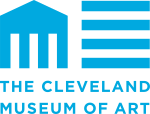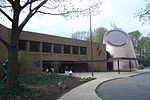Red Cross with Triptych (Fabergé egg)
1915 worksCollection of the Cleveland Museum of ArtImperial Fabergé eggs

The Red Cross with Triptych egg, also known as Red Cross Triptych egg or Red Cross Egg with Resurrection Triptych, is an enameled Easter egg made under the supervision of the Russian jeweler Peter Carl Fabergé in 1915, for Nicholas II of Russia. Nicholas II presented the Fabergé egg to his wife Empress Alexandra Fyodorovna on Easter 1915.
Excerpt from the Wikipedia article Red Cross with Triptych (Fabergé egg) (License: CC BY-SA 3.0, Authors, Images).Red Cross with Triptych (Fabergé egg)
East Boulevard, Cleveland
Geographical coordinates (GPS) Address Phone number Website Nearby Places Show on map
Geographical coordinates (GPS)
| Latitude | Longitude |
|---|---|
| N 41.5089 ° | E -81.6117 ° |
Address
Cleveland Museum of Art
East Boulevard 11150
44114 Cleveland
Ohio, United States
Open on Google Maps







